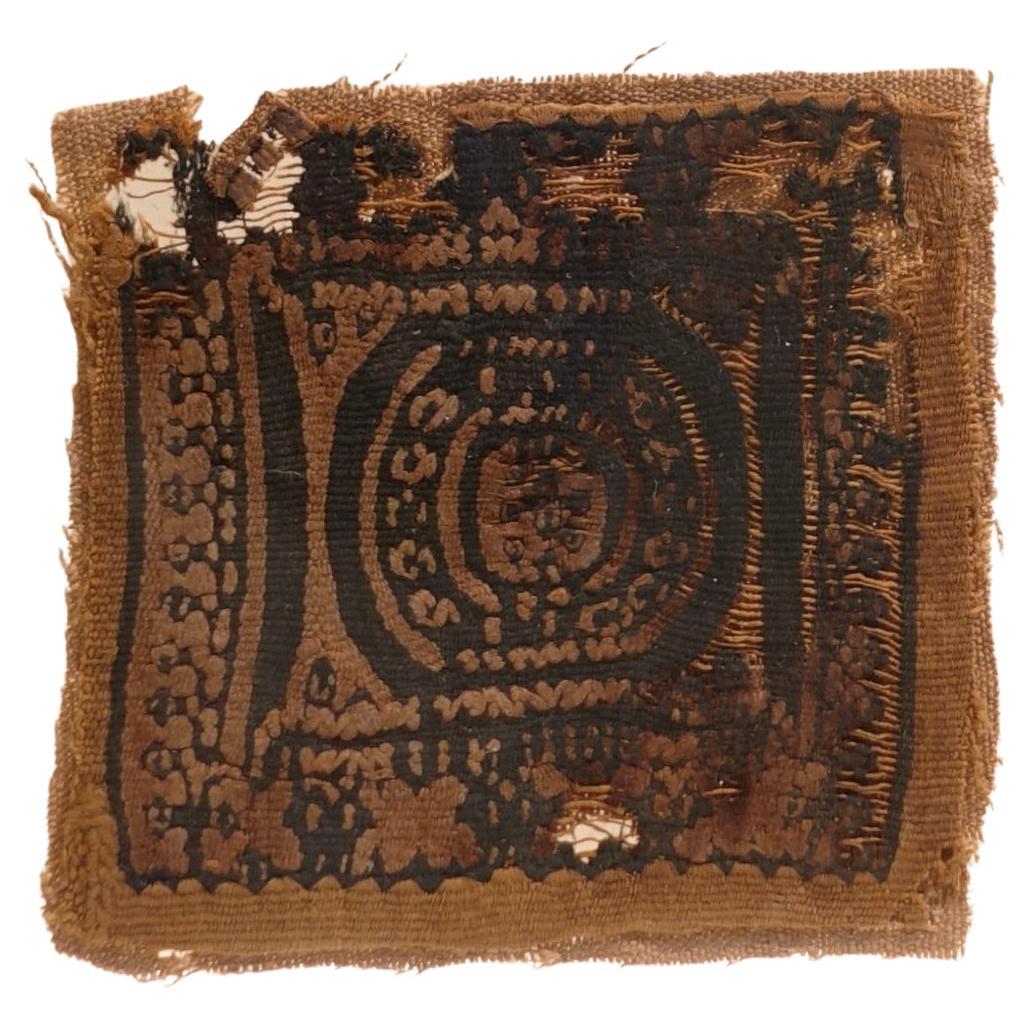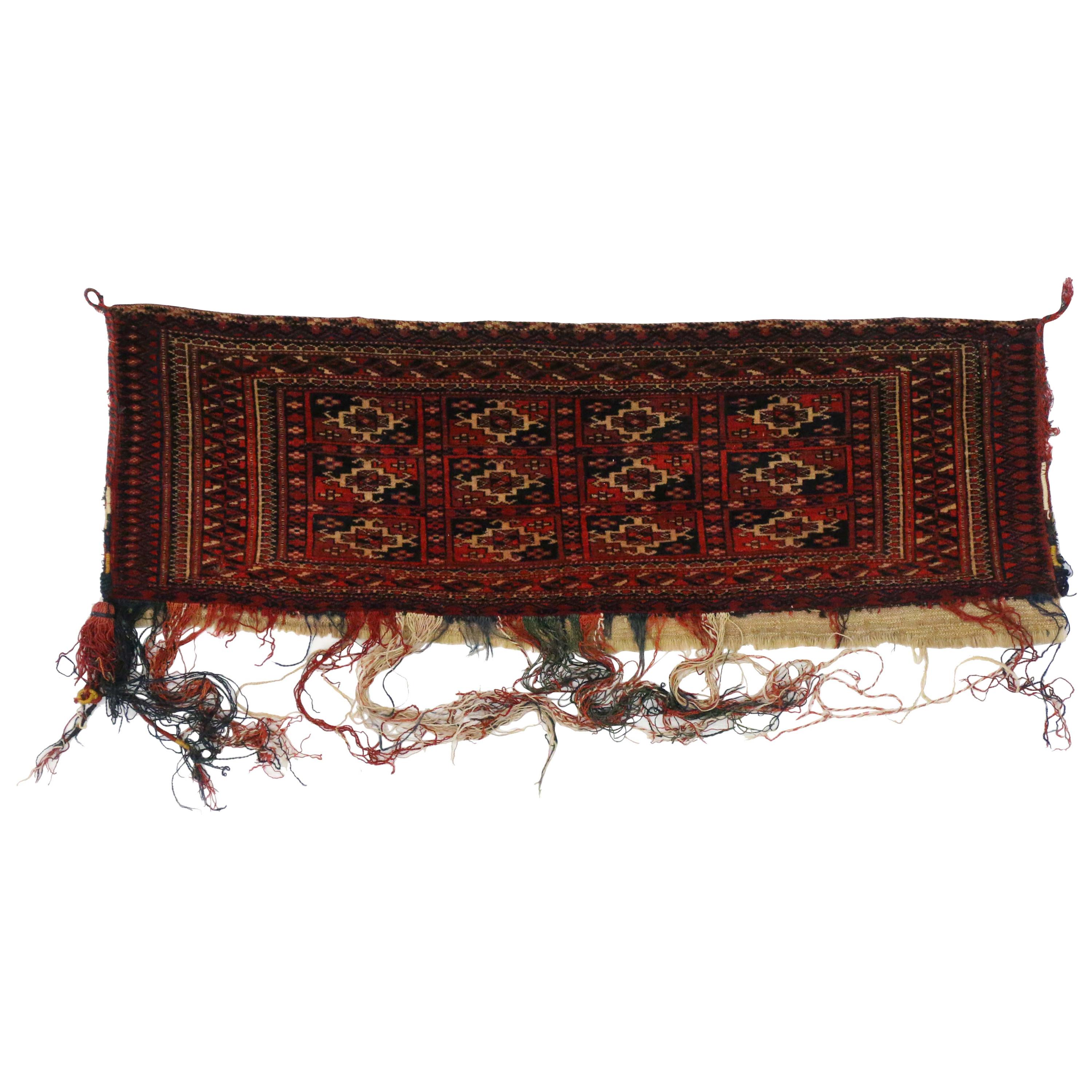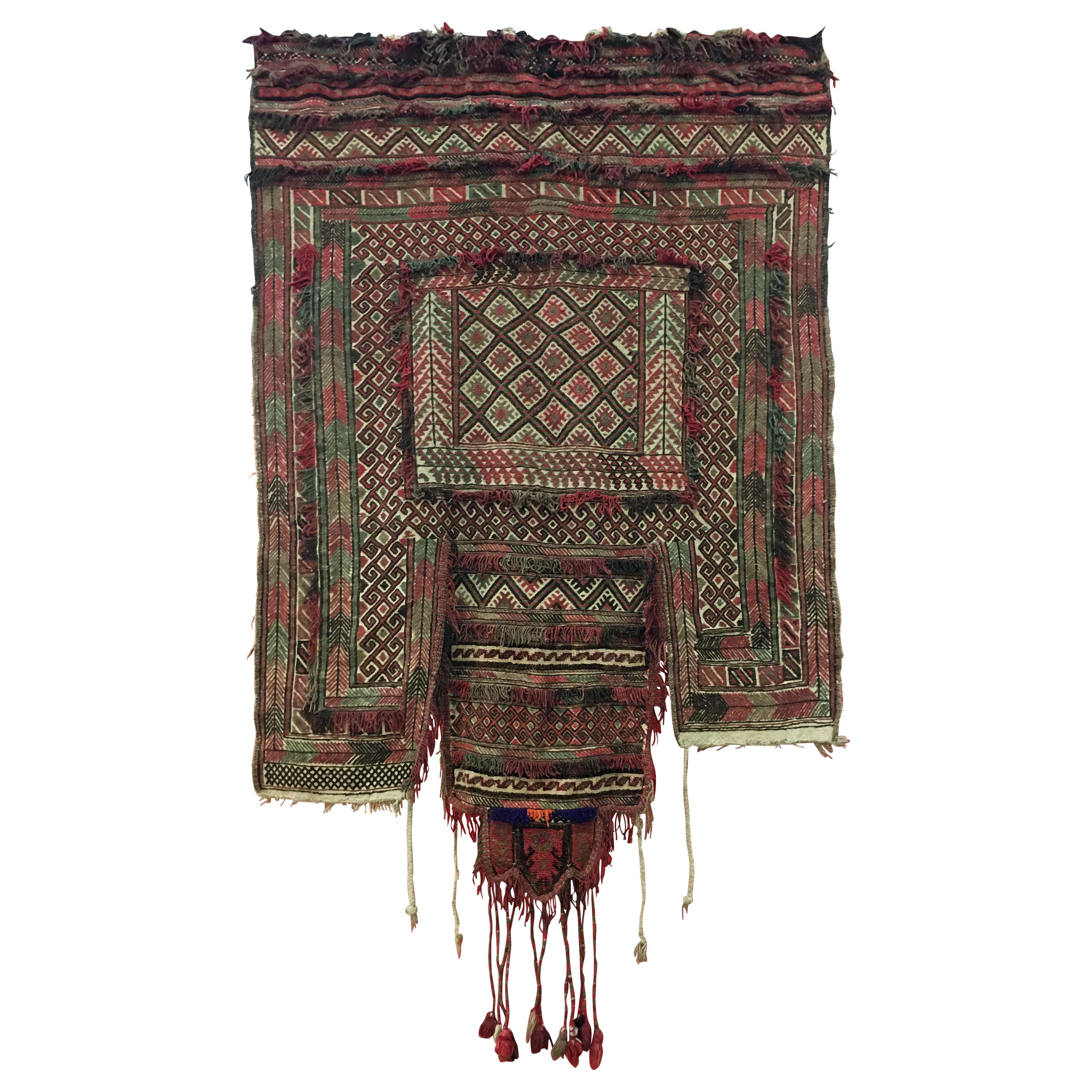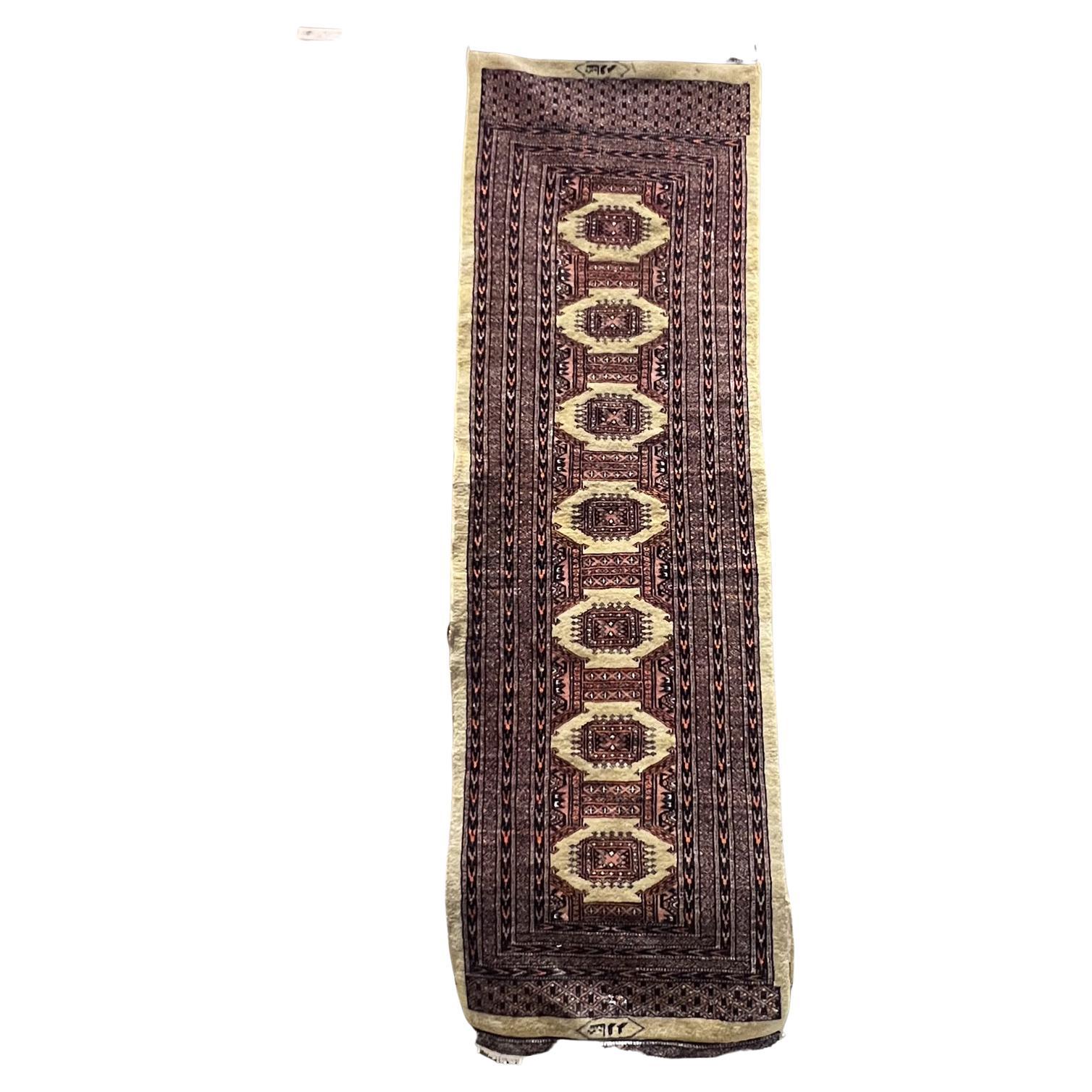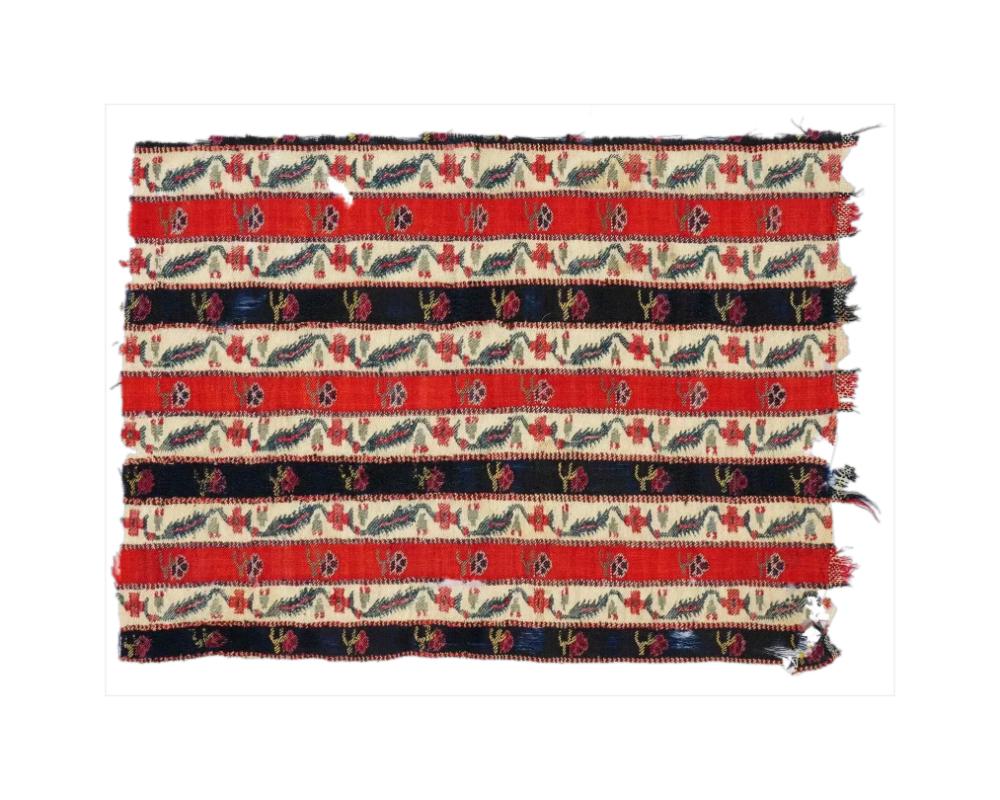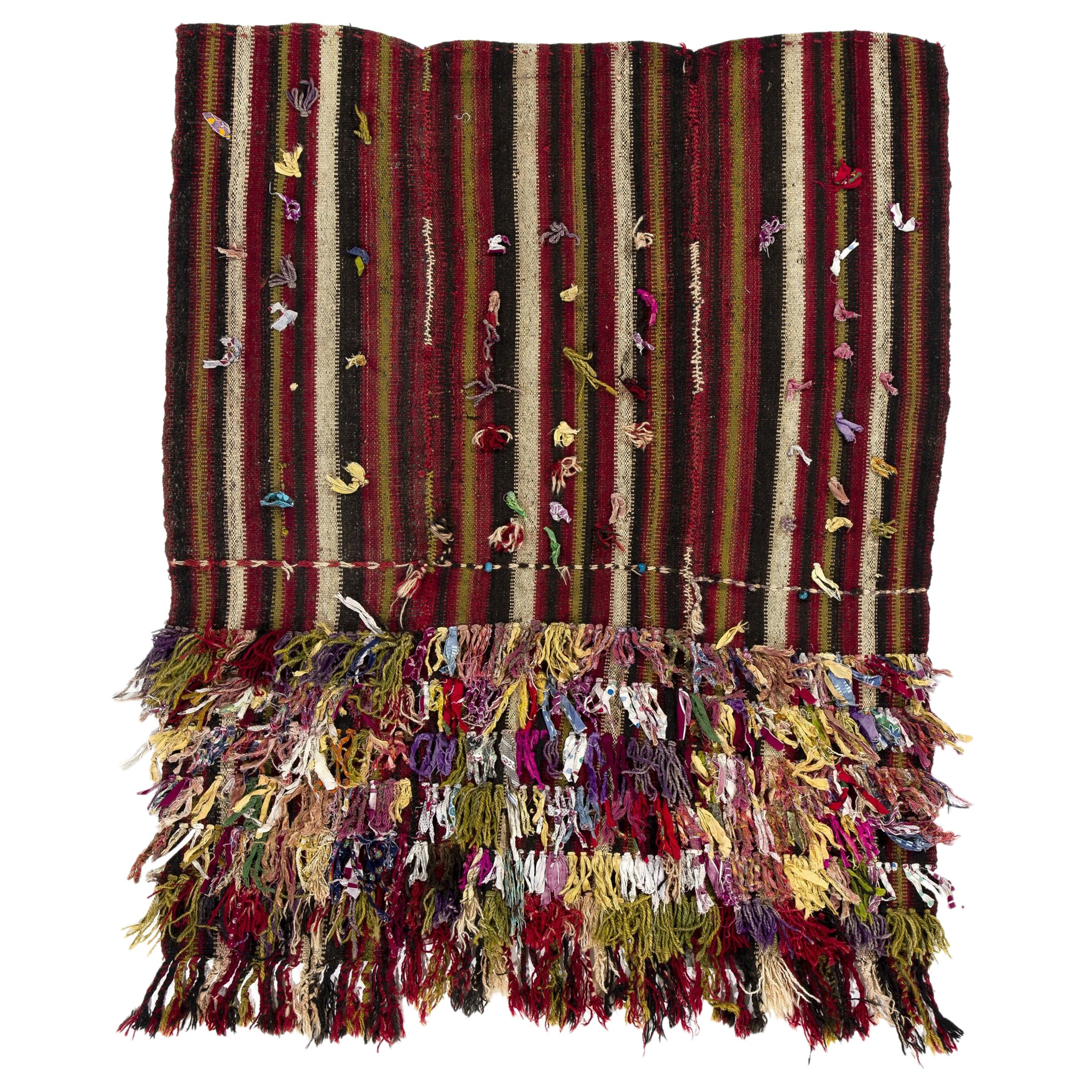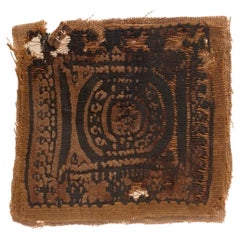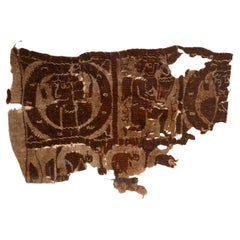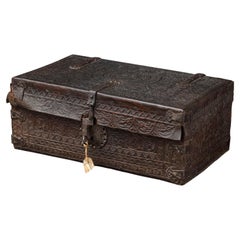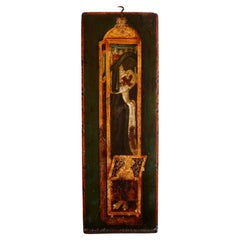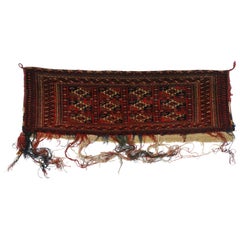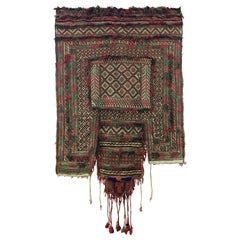Items Similar to Wool Tapestry from Egypt
- 5th–7th Century C.E.
Want more images or videos?
Request additional images or videos from the seller
1 of 5
Wool Tapestry from Egypt
- 5th–7th Century C.E.
$2,140.87
£1,594.45
€1,800
CA$3,002.67
A$3,293.64
CHF 1,698.41
MX$39,339.31
NOK 21,540.99
SEK 20,207.89
DKK 13,720.40
About the Item
Wool Tapestry from Egypt
Late Antique Period; 5th–7th Century C.E.
This band fragment features geometric decorations in red and black.
Textiles like this are believed to have been crafted by Copts (Christian Egyptians) and other weavers throughout the Byzantine Empire. The designs and motifs found in Coptic and Byzantine textiles significantly influenced the visual styles of the early Islamic period. This fragment likely belonged to the decoration of a tunic, which was a key garment during the Late Antique era.
The Copts used tunics, shawls, and hangings as burial shrouds. This explains why archaeologists conducting excavations in Egypt during the 19th and early 20th centuries discovered numerous textiles made of linen, wool, and silk in the Greco-Roman and Byzantine necropolises, some dating back to the 2nd century C.E. Due to the dry climate and burial techniques, Coptic fabrics have often retained their colors.
At the 1900 Exposition Universelle in Paris, the French archaeologist Albert Gayet showcased the results of his excavations from the winter of 1898-1899. Around one hundred Coptic textiles and fragments were displayed at the Palais du Costume. Their aesthetic generated considerable enthusiasm, particularly among artists like Auguste Rodin and Henri Matisse. This led to a "Coptomania," which, among other things, influenced fashion designers.
Coptic textiles represent the largest collection of ancient historical textiles found in museums as the Brooklyn museum, the Louvre, the Met , Palazzo Madama in Turin.
- Dimensions:Height: 3.94 in (10 cm)Width: 7.25 in (18.4 cm)Depth: 0.04 in (1 mm)
- Style:Egyptian (Of the Period)
- Materials and Techniques:
- Place of Origin:
- Period:
- Date of Manufacture:Late Antique Period
- Condition:Wear consistent with age and use.
- Seller Location:Bruxelles, BE
- Reference Number:1stDibs: LU6666241775622
About the Seller
5.0
Vetted Professional Seller
Every seller passes strict standards for authenticity and reliability
1stDibs seller since 2022
15 sales on 1stDibs
Typical response time: <1 hour
- ShippingRetrieving quote...Shipping from: Bruxelles, Belgium
- Return Policy
Authenticity Guarantee
In the unlikely event there’s an issue with an item’s authenticity, contact us within 1 year for a full refund. DetailsMoney-Back Guarantee
If your item is not as described, is damaged in transit, or does not arrive, contact us within 7 days for a full refund. Details24-Hour Cancellation
You have a 24-hour grace period in which to reconsider your purchase, with no questions asked.Vetted Professional Sellers
Our world-class sellers must adhere to strict standards for service and quality, maintaining the integrity of our listings.Price-Match Guarantee
If you find that a seller listed the same item for a lower price elsewhere, we’ll match it.Trusted Global Delivery
Our best-in-class carrier network provides specialized shipping options worldwide, including custom delivery.More From This Seller
View AllKapati textile - Epoque Byzantine; 4th–5th Century C.E
Located in Bruxelles, BE
Kapati Textile
Byzantine Period; 4th–5th Century C.E.
Materials: Plant and Animal Fibers, Wool
9,5 x 9,5 cm
This woolen fabric is woven in the traditional Coptic Kapati style, characteristic of Egypt during the Christian era. The name "Kapati" refers to the Copts of Egypt and describes a weaving technique that does not use embroidery or printing. It is said that Al-Muqawqis, the governor of Egypt, offered the Prophet garments made from Kapati fabric.
At the 1900 Exposition Universelle in Paris, the French archaeologist Albert Gayet showcased the results of his excavations from the winter of 1898-1899. Around one hundred Coptic textiles and fragments were displayed at the Palais du Costume. Their aesthetic generated considerable enthusiasm, particularly among artists like Auguste Rodin and Henri Matisse. This led to a "Coptomania," which, among other things, influenced fashion designers.
The square fragment features black decoration on a beige background; the two squares at the center are separated by scalloped edges, from which hang various ornaments or geometric motifs. At the center of the fragment is an image of a dancing figure surrounded by geometric decorations. This piece dates back to a time when ancient...
Category
Antique 15th Century and Earlier Egyptian Egyptian Antiquities
Materials
Wool, Natural Fiber
Coptic textile Byzantine Period; 4th–5th Century C.E.
Located in Bruxelles, BE
Coptic textile
Byzantine Period; 4th–5th Century C.E.
Materials: linen, Wool
23 x 16 cm
This fragment features black decorations on a beige background, depicting human figures with...
Category
Antique 15th Century and Earlier Egyptian Egyptian Antiquities
Materials
Wool, Linen
Boiled Leather Trunk, Spanish, 17th Century
Located in Bruxelles, BE
Leather trunk
Spanish, 17th century
Boiled Leather, wood and iron
Measures: 22 x 53 x 32 cm.
Provenance :
- collection Metz-Noblat, Château de Clevant, France
Rectangular trunk of the form and size of a small suitcase with wrought iron hinges and lock-plate.
Wood, covered with leather, cut and embossed with every surface of the thick cow hide covered in interlace, zoomorphic features.
The construction method is boiled leather, often referred to by its French translation cuir-bouilli: a process used to change flexible, vegetable-tanned leather into rigid, moulded objects. For shaping of the vegetable-tanned leather, heat and moisture were used, as indicated by the term boiled leather. No written medieval sources describing the production of decorated cuir bouilli objects survive, so knowledge of the process relies on the important studies of the Scottish leather historian John William Waterer. A large range of methods, materials and techniques could be used in various combinations. The vegetable-tanned leather, made supple with moisture and heat, was stuffed, shaped and nailed to the rigid wooden coffer support. The stuffing material was probably modeled beeswax or stearin wax. To shape the leather, to create its topography, « Cushions » were made by lacing a thread through an awl hole and attaching the flexible leather and stuffing to the rigid wooden support on the bottom. Then the decoration was done: lines were incised through the upper layer of the leather (epidermis) with different thicknesses of knives or needles. Contours were created with deep v-shaped cuts, decoration with thin incision and final details with a needle point. For the incision and pouncing stage, the leather was probably kept heated and moistened for suppleness.
Once dry, the leather would be hard and rigid.
the saturated leather is worked over a form, possibly even damp sand, with the pattern shaped using bone or wooden tools. Compare to metal, leather was lighter and it offered protection from cuts and punctures. Cuir bouilli objects were produced by specialist leather workers and needed skillful craftsmanship.
The surface is filled with roundels shaped foliages enclosing animals, lions and peacocks. The foliate arabesques creating a vegetal connection tweet the animals create the impression of a lush verdant space . The vegetal pattern here employed in combination with geometrical pattern came from the pre-islamic artistic traditions of the Byzantine and Sasanian empires. An aspect of Islamic geometry Is the basic symmetrical repetition and mirroring of the shapes that create a sense of harmony.
The decoration of this truck is inspired by the islamic « arabesque » a form of vegetal ornament composed of spirals, intertwining plants and abstract curvilinear motifs. An arabesque character is given to the birds of the decorations through extreme stylisation. This arabesque maintained the classical tradition of median symmetry, freedom in Detail and heterogeneity of ornament.
The presence of the peacocks is a paradisiacal allusion: in popular Islamic literature they were among the original inhabitants of the garden of Paradise expelled with Adam and Eve. Peacock as a decorative motif may have originated in the West, despite their eastern provenance. There was an ancient belief that the flesh and feathers of peacock do not decay. This led to the peacock becoming a christian symbol for Christ’s resurrection.
Renowned for their decorative wall hangings, seventeenth-century Spanish leatherworkers also produced utilitarian objects, such as this trunk. A similar trunk is on display at the Metropolitan museum of art ( 09.158.1).
Related literature :
Davies L. 2006. Cuir bouilli. Conservation of leather and related materials, 94-102, Oxford: elsevier Butterworth-Heinemann
Grabar, Oleg. The Mediation of Ornament. Princeton: Princeton University Press, 1992
Gabriela Germana Roquez, "El mueble en el Peru en el siglo XVIII...
Category
Antique 17th Century Decorative Boxes
Materials
Iron
Bolognese School of the 16th Century - Mummy of Saint Catherine of Bologna
Located in Bruxelles, BE
Bolognese School of the 16th Century
Mummy of Saint Catherine of Bologna
Oil on Panel
20,5 x 7 x 0,8 cm
This rare painting depicts Saint Catherine of Bologna as a mummy, housed in a ...
Category
Antique 16th Century Italian Renaissance Paintings
Materials
Wood, Giltwood
$3,330 Sale Price
20% Off
Free Shipping
Egyptian Fragment of a Seated Man - Ancient Egypt, 26th Dynasty (664-525 BC)
Located in Bruxelles, BE
Egyptian Fragment of a Seated Man
Limestone - polychromy
Ancient Egypt, 26th Dynasty (664-525 BC)
Most likely from the tomb of Montw-m-H3t
Provenanc...
Category
Antique 15th Century and Earlier Egyptian Egyptian Figurative Sculptures
Materials
Limestone
Decorative Carved Panel - France, 19th Century
Located in Bruxelles, BE
Decorative Carved Panel
France, 19th Century
15,5 x L 30,5 x 3 cm
Carved in richly grained wood, this 19th-century decorative panel draws direct inspiration from Renaissance ornamen...
Category
Antique Early 19th Century French Renaissance Wall-mounted Sculptures
Materials
Wood
You May Also Like
Antique Afghan Turkoman Turkmen Torba Bag, Wall Hanging, Tribal Textile Tapestry
Located in Dallas, TX
76639 Antique Afghan Turkoman Turkmen Torba bag, wall hanging, tribal textile tapestry. This hand knotted wool antique Afghan Turkmen Turkoman Torba sto...
Category
Early 20th Century Afghan Tribal Central Asian Rugs
Materials
Wool
$2,800 Sale Price
20% Off
Large Tapestry, North Africa, circa 1950
Located in Saint-Ouen, FR
Large tapestry, North Africa, circa 1950.
Category
Vintage 1950s African Moorish Tapestries
Materials
Wool
Middle Eastern Wall Art Tapestry Traditional Large Prayer Rug Signed
Located in Chula Vista, CA
Middle eastern Wall Art Wool Tapestry Traditional Large Prayer Rug Runner
Signed
Handmade Persian prayer Rug
20W x 80L x 2H
Original Unrestored Vinta...
Category
Mid-20th Century Mid-Century Modern Tapestries
Materials
Textile
18Th Cen Persian Safavid Dynasty Hand Woven Textile
Located in Long Island City, NY
An antique Persian Iranian Safavid dynasty hand woven embroidered textile wall hanging. The textile is made in a striped design, adorned with hand embroidered floral, and foliage orn...
Category
Antique 18th Century Unknown Textiles
Materials
Textile
$520 Sale Price
35% Off
Hand-Woven Tribal Kurdish Wool Kilim. 4' x 4'8'' Flat-Weave Rug or Wall Hanging
Located in Spring Valley, NY
This lively handwoven rug was produced by Kurdish villagers in Central Turkey for daily use in third quarter of the 20th century.
These splendid vintage weavings were used in various ways such as wall-hangings, bedding covers...
Category
Mid-20th Century Turkish Kilim Turkish Rugs
Materials
Wool, Cotton
$379 Sale Price
40% Off
Free Shipping
Bobyrug’s Nice Antique Termeh Embroidery
Located in Saint Ouen, FR
Discover the timeless elegance of our late 19th-century Kirman Termeh fragment—a masterpiece of hand-embroidered artistry. Adorned with a captivating floral design, this exquisite pi...
Category
Antique Late 19th Century Indian Kirman Tapestries
Materials
Wool, Silk
More Ways To Browse
Octave Landuyt
Paul Klee Drummer
Paul Klee Tapestry
Persian Termeh
Rambouillet Tapestry
Scottish Sampler
Sonia Delaunay Tapestry
Tapestry Marc Petit
Tapestry Shag
Ted Morris
Toile Tapestry
Vintage Macrame Wall
Vivienne Westwood Tapestry
Wall Tapestry With Sheep
Achilles Tapestry
Alexander Girard Enrichment Panel
Amsterdam School Tapestry
Antique Framed Needlepoint 1850
